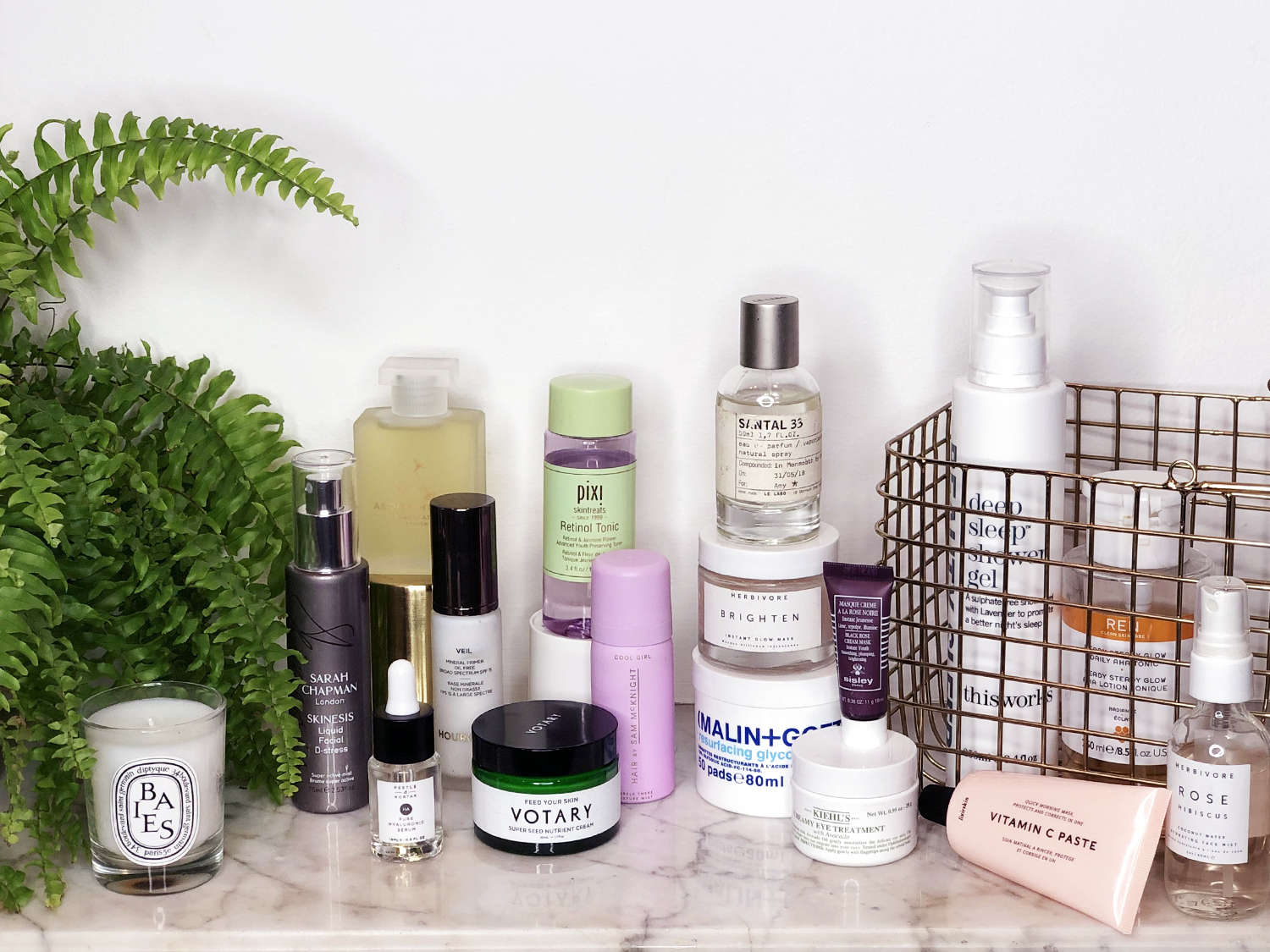Beauty brands quite like us to be confused, that way we’re more likely to buy more products just in case. But, when it comes to a good, solid, skincare routine it’s actually pretty simple. Once you’ve identified your skin type (click here to work out what your skin type is) then it’s simply a case of sticking to a consistent routine. Consistency really is the crux of it, if you keep chopping and changing your complexion will get confused. It’s not a Love Island contestant, find its type on paper and stick to it. Of course, you can switch products in and out but try to only try one new product at a time and stick with it for at least 28 days (unless you have an adverse reaction, in which case stop).
Now, if you want to try a Korean-style routine with 11+ steps, by all means go ahead but you really don’t need to. All you really need to do is the following:
AM/PM: Cleanse
AM/PM: Exfoliate (depending on skin type)
AM/PM: Treat
AM/PM: Hydrate
AM: Protect
Follow my simple guide below.
In the AM:
Cleanse
You do not need to spend a lot of money on cleansers! If you want to and can afford to great, but if you can’t look to brands like CeraVe or try Your Good Skin.
If you have oily skin look to a gel cleanser and if you have dry skin a cream cleanser. However, the rules are there to be broken. I use a cream, and sometimes oil-rich balm, cleanser and have oily skin, you’re washing it off (ideally with a cloth) so go with sensorial preference.
Exfoliate*
I exfoliate every day because I have oily skin that needs it. I also like to gently exfoliate (with a cloth or a pre-soaked PHA pad) if I’ve used a rich cleanser to remove any residue. If you have dry skin you may only need to exfoliate 1-2 times per week. “Normal” skin might want to slough at it 2-3 times per week.
*I use retinol at night so I exfoliate in the morning. If you’re not using retinol you can exfoliate either morning or night.
Treat
This is where having a handle on your skin type is helpful. For your treatment product, you should look to a serum targeted at your skin concerns.
Here is a very simple guide to some of the key ingredients to look out for:
Pigmentation: Vitamin C (brightening), liquorice (brightening, prevents new pigmentation).
Acne/blemishes: Zinc (anti-inflammatory), salicylic acid (pore cleansing).
Dry/dehydrated skin: Ceramides (lipids that support skin barrier), glycerin (hydrating), hyaluronic acid (hydrating). Note: Dry is a genetic skin type (if you’re prone to eczema, for instance) whilst dehydration can happen to any skin type, even oily! So, these ingredients are good for all skin types if you tend to break out or your complexion feels parched, especially in the switch from summer to autumn).
Fine lines/wrinkles: Peptides (collagen-boosting), retinol*.
Redness/rosacea: Niacinamide (anti-inflammatory, barrier-boosting), green tea (antioxidant, protecting).
*Retinol is actually a great all-rounder, read my guide to the wonder ingredient here.
Hydrate
Dehydration is not to be confused with dry skin, which is a skin type. Dehydration can happen to anyone and can cause the onset of fine lines and even blemishes, so keeping your complexion hydrated is key.
Hyaluronic acid and glycerin hydrate the skin, while ceramides help to repair and support the skin barrier. A compromised skin barrier can lead to TEWL (trans-epidermal water loss) and dehydration, so you want to keep the protective skin “wall” strong.
Depending on your preference and skin type this can be a serum, lightweight lotion or cream. I have oily/combination skin I apply a hydrating serum, whereas someone with dry skin might like to use a rich cream to hydrate and lock-in moisture.
Protect
SPF! Every. Single. Day.
In the PM:
Cleanse
Double cleanse every evening to ensure all makeup and dirt is removed. Cleanse once using a cloth and then repeat. Use a clean cloth every night, you can buy really affordable micro-fibre cloths from Primark.
Exfoliate
Again, this is down to your skin type. You can see my favourite exfoliators here.
Treat
Repeat your serum application in the evening. Or, if you’re on the retinol train apply yours now. I’ve been using Dr. Sam Bunting’s new retinol-based Flawless Nightly Serum, £39, which is very good and pretty reasonable. It contains niacinamide so it helps sensitive skin handle the retinol, along with azelaic acid which resurfaces the skin and bakuchiol, a plant-based ingredient that gives retinol-like results without the irritation. You can use it every night.
Some retinol products can only be used a few nights a week, in which case you would use your other serum product on the other nights.
Hydrate
Layer your hydrating product over your treatment serum before bed. If you’re using retinol and have dry or sensitive skin then you can stick with this step, otherwise, you might want to skip it altogether and let the retinol go it alone.
So there you have it! A skincare routine doesn’t have to be super confusing.
Want to strip it back even more? Get yourself a good basic cleanser and be sure to double cleanse at night. Use a Vitamin C serum and SPF (30+) in the morning to protect, then at night apply retinol (if you’re in your thirties) or repeat your morning routine (minus the SPF). Hydrate with a hyaluronic acid-based serum or lotion morning and night, and lock it in with a richer cream if you have very dry skin. It really can be that simple!
Next, this is how to decipher what your skin type is.


